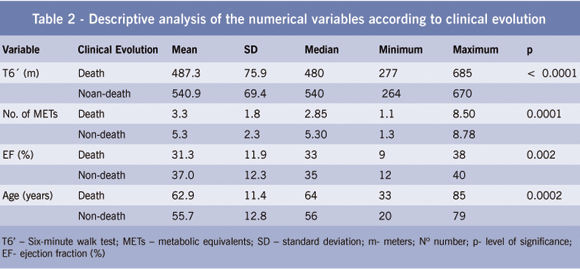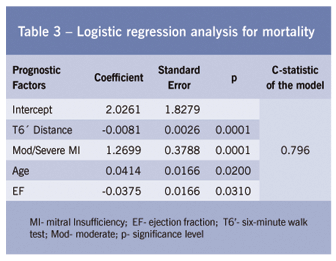OBJECTIVE: This study aimed to assess the true usefulness of the Six-Minute Walk Test as a prognostic indicator and its contribution to clinical practice with heart failure patients. METHODS: In order to investigate the actual value of the Six-Minute Walk Test as an objective measure of mortality probability in patients with heart failure, the test was applied to 179 stable patients (120 men and 59 women, mean age 58.32 ± 12.7 years, with NYHA class II and III heart failure and an ejection fraction (LVEF) of 34.91 ± 12.4%). Patients were instructed to walk for 6 minutes and then, four hours later, underwent a conventional exercise stress test (as per Naughton Protocol). Patients were followed for an average of eighteen months. RESULTS: The average distance walked was 521.11 ± 76.1 meters. During the follow-up period, 66 patients (36.9%) died. There was a significant correlation between the distance walked during the test and mortality (p < 0.0001). The logistic regression model identified the distance walked during the test as the most important independent predictor of mortality (p = 0.0001). A distance shorter than 520 meters identified the patients with an increased probability of death. There was a significant correlation between the number of metabolic equivalents (METs) measured during the conventional exercise stress testing and mortality rate (p = 0.0001). CONCLUSION: The Six-Minute Walk test is a simple, safe and powerful method to assess the prognosis of patients with NYHA class II and III heart failure. It is an objective examination that may replace the conventional ergometric test for the prognostic evaluation of these patients.
Six-Minute Walk test; heart failure; prognosis



